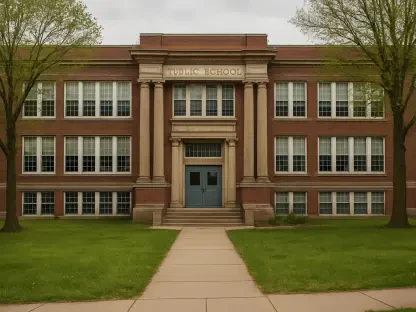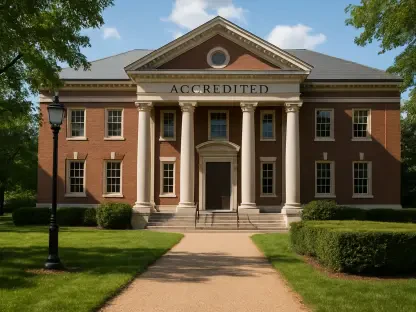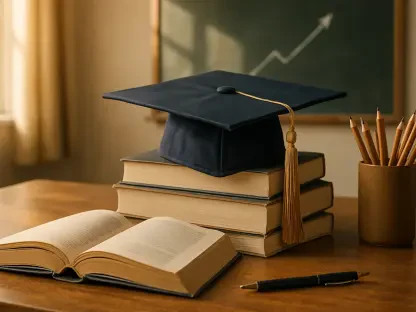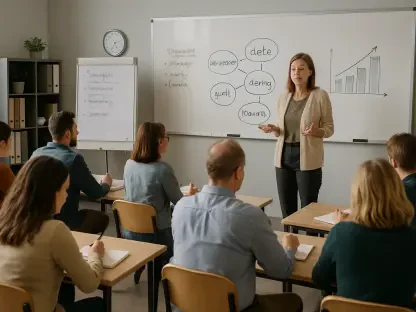What happens when the classrooms of America face a shortage of teachers, not because of retirement or resignation, but because fewer people are choosing to enter the profession at all, threatening the very foundation of public education? Across the nation, a troubling trend has unfolded over recent decades, with a sharp drop in the number of individuals earning education degrees, leaving schools scrambling to fill positions and raising critical questions about the future of learning. As alternative training programs rise to fill the gap, the landscape of teacher preparation is undergoing a seismic shift, one that demands attention from educators, policymakers, and communities alike.
A Quiet Crisis in Classrooms: Why Are Fewer Choosing Teaching?
The shortage of teachers in American schools is no longer a distant concern but a pressing reality. Many districts, especially in rural and underserved urban areas, struggle to staff classrooms, often relying on underqualified substitutes or overburdened educators. This gap stems from a deeper issue: a diminishing interest in teaching as a career path. The allure of other professions with higher pay or better working conditions has pulled potential educators away, leaving a void in the pipeline of qualified professionals ready to inspire the next generation.
Beyond financial disincentives, societal perceptions play a significant role. Teaching, once viewed as a noble and respected calling, now often faces criticism amid political debates over curriculum and school policies. Aspiring educators may hesitate to enter a field where burnout rates are high and public support feels uncertain. This cultural shift has contributed to a growing reluctance among young adults to pursue education degrees, setting the stage for a crisis that could reshape schools for years to come.
The Stakes of a Shrinking Educator Pipeline
This decline in education graduates is not merely a statistic—it carries profound implications for the quality of education. With fewer trained teachers, class sizes balloon, reducing individualized attention for students. Schools in low-income areas, already grappling with resource shortages, bear the brunt of this challenge, often unable to attract or retain staff. The ripple effect touches every corner of society, as the foundation of a well-educated populace weakens under the strain of insufficient educators.
Moreover, existing teachers face mounting pressure as they shoulder heavier workloads to compensate for staffing gaps. Burnout and turnover rates climb, exacerbating the shortage in a vicious cycle. For parents and communities, this translates to uncertainty about whether children are receiving the instruction they need to thrive in an increasingly competitive world. The urgency to address this issue extends beyond academic circles, touching policymakers tasked with ensuring a robust future for public education.
Unpacking the Numbers: Two Decades of Decline and Diverging Paths
A closer look at the data reveals a stark transformation in teacher preparation over the past two decades. Between 2003-04 and 2022-23, bachelor’s degrees in education fell by 17%, dropping from 109,622 to 90,710. Master’s degrees saw a similar downturn, declining 12% from 162,632 to 143,669 in the same period. More recent figures show an even sharper drop, with a 3% decrease in bachelor’s and a 5% reduction in master’s degrees just between 2021-22 and 2022-23, signaling an accelerating trend.
In contrast, alternative teacher preparation programs have surged in popularity. Enrollment in non-college-based programs skyrocketed from 43,099 in 2012-13 to 124,428 by 2022-23, nearly tripling in a decade. Completions in these programs grew more modestly, rising by 9%, while college-based alternative pathways saw a 44% increase in completions. This pivot toward non-traditional routes highlights a growing preference for faster, more flexible certification options amid urgent staffing needs.
Amid these shifts, a positive development emerges: greater diversity among education degree recipients. By 2022-23, non-White graduates accounted for 29% of bachelor’s degrees, up from 23% in 2016-17, and 33% of master’s degrees, up from 28%. Doctoral degrees saw an even larger shift, with 42% awarded to non-White individuals compared to 37% earlier. This trend offers hope for a teaching workforce that better reflects the diverse student population it serves.
Voices from the Field: Insights from Experts and Educators
To understand the full scope of this transformation, perspectives from those directly involved provide crucial context. Jacqueline King, a representative from the American Association of Colleges for Teacher Education (AACTE), emphasizes the importance of federal data in tracking these trends. “Without reliable information, it’s impossible to craft effective policies or understand the true state of educator supply,” King notes, highlighting concerns over potential funding cuts to education research that could obscure future analyses.
Concerns also arise about the quality of training in alternative programs compared to traditional degrees. AACTE reports suggest that while non-traditional pathways offer speed and accessibility, they may lack the depth of pedagogical grounding provided by university-based programs. This discrepancy raises questions about long-term preparedness for the complex demands of teaching, particularly in challenging environments.
Adding a personal dimension, consider the story of Maria Lopez, a teacher in a Texas district who entered the profession through an alternative certification program. “It got me into the classroom quickly, which was great with the shortages,” Lopez shares. “But I often felt I had to learn on the job, without the foundational support I saw in colleagues from traditional programs.” Her experience underscores the trade-offs inherent in these emerging pathways, blending opportunity with uncertainty.
Navigating the Future: Strategies to Rebuild the Teacher Pipeline
Addressing this decline requires a multifaceted approach that tackles both attraction and retention of educators. One critical step involves improving compensation and working conditions to make teaching a more competitive career choice. Higher salaries, better benefits, and reduced administrative burdens could draw more candidates back to traditional education degrees, ensuring a steady flow of well-prepared professionals into schools.
Equally important is the need to uphold rigorous standards in alternative training programs. While these pathways meet immediate staffing demands, ensuring they provide comprehensive preparation is essential to maintain educational quality. Policymakers and institutions must collaborate to establish benchmarks that balance speed with substance, equipping all new teachers with the skills needed to succeed.
Finally, capitalizing on the growing diversity of educators offers a pathway to strengthen the profession. Mentorship programs and targeted support for non-White teachers can help retain talent and build a workforce that mirrors student demographics. By fostering inclusive environments and providing resources for underrepresented educators, schools can create a more equitable and effective educational system, addressing both shortages and cultural needs in tandem.
As the nation reflected on the evolving landscape of teacher preparation, it became clear that actionable steps were essential to reverse the decline in education degrees. Stakeholders had worked tirelessly to advocate for better pay and conditions, while efforts to standardize alternative training gained traction. Looking ahead, the focus remained on building a diverse, well-equipped teaching workforce through sustained investment and policy reform, ensuring that every classroom had a qualified educator at its helm.









